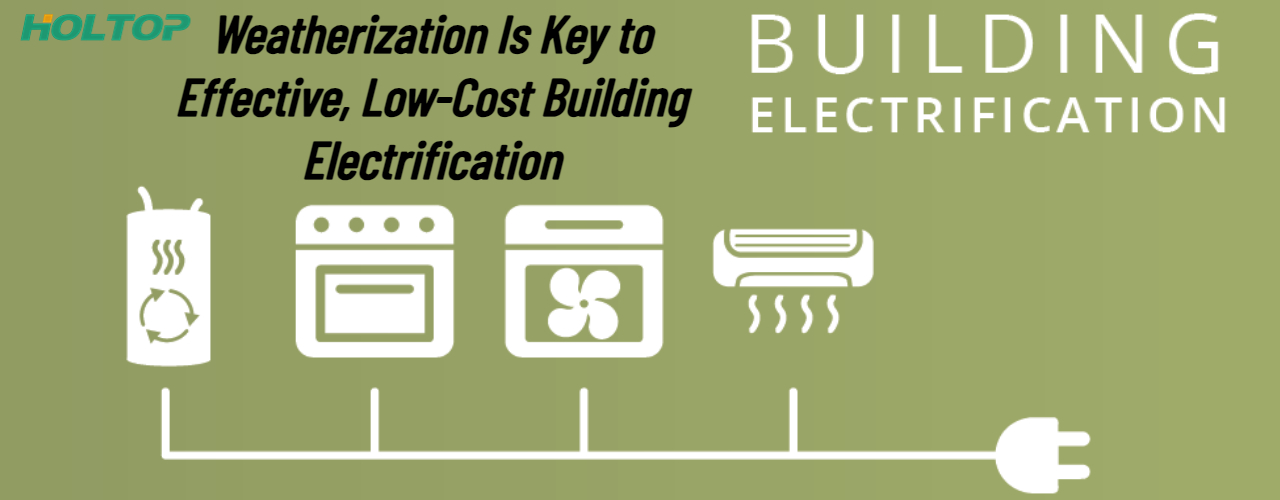
Billions of dollars in Inflation Reduction Act rebates are set to become available beginning this year to help households improve their energy efficiency and electrify. As state energy offices prepare their programs to disperse the funds, they should strongly encourage households installing heat pumps to pair them with insulation and air-sealing measures. These improvements in walls, roofs, and windows—and other parts of the building envelope—pair well with electrified heating to significantly reduce households’ utility bills, stress on the electric grid, and climate pollution.
Fossil fuels burned in buildings contribute more than 10% of U.S. energy-related greenhouse gas (GHG) emissions, so electrification is a key climate mitigation tool. Yet on its own, electrification of buildings will increase electricity demand, driving a corresponding need for additional electric grid infrastructure. To help avoid potential increased costs, improving insulation in walls, attics, and basements, sealing air leaks, or installing higher-efficiency windows may be appropriate.
Better-insulated buildings reduce utility bills
A well-insulated building can use a less powerful (lower capacity) heat pump, which costs less to purchase and operate. Part of these savings result from tighter envelopes reducing the energy required to keep a building at a comfortable temperature. The average residential customer who weatherizes while electrifying can expect to save between $150 and $1,200 per year—with most households saving between $500 and $800 per year—compared to one who electrifies alone.
We calculated that moderate home envelope improvements reduce the lifetime cost of owning and operating a heat pump by $3,000 to $11,000. And deeper envelope improvements that add window upgrades and higher levels of insulation lower the lifetime heat pump costs $8,000 to $22,000, we estimate. This analysis will be featured in more detail in a forthcoming ACEEE publication.
Larger savings are realized in colder climates and by virtue of deeper efficiency measures. Modest weatherization measures like air sealing and increasing the quality and thickness of attic insulation can reliably reduce energy usage by 12% to 18%. These improvements fall short of achieving the energy performance of new buildings that meet the latest model codes some states are starting to adopt. Deeper building retrofits that add insulation to walls, basements, and rim joists and that involve installing higher-efficiency windows would be needed for that. These retrofits could deliver 11% to 47% energy savings (depending on the state), with a national average around 33% savings.
Insulation can reduce strain on the electric grid and climate pollution
Envelope improvements in electrified buildings also offer great value to the electric grid. Residential envelope improvements can reduce peak electric load at times of highest energy demand around 7% to 10%, with only slightly smaller reductions in the commercial sector. These reductions are important because high peak load drives the need for additional power plants, transmission lines, and distribution system upgrades. These are significant costs that utilities typically recover from customers through their electric bills, meaning that envelope improvements in just a subset of buildings can deliver cost savings to all customers. In Massachusetts and Minnesota, future peak increases as high as 40% have been projected under higher-electrification scenarios, making envelope improvements a critical component of their cost-effective electrification.
Efficient envelopes’ ability to reduce demand during some of the grid’s most carbon-intensive hours of the year makes them effective at helping reduce GHG emissions. When coupled with high rates of electrification, the combination of clean electricity and efficient envelopes can reduce building-related emissions 67% to 91% below 2005 levels by 2030 and 2050, respectively. The exact reduction depends on the carbon content of electricity, but envelope improvements are estimated to deliver between 20% and 30% of those GHG reductions on their own.
Efficient buildings improve resident health and create jobs
Efficient building envelopes offer additional benefits unrelated to energy or emissions. By reducing uncontrolled air exchange between the indoor and outdoor environments, efficient envelopes can improve indoor air quality. This can reduce asthma and allergy symptoms, improve sleep quality and cognitive function, and result in fewer missed days or work or school. Tighter envelopes usually necessitate some form of mechanical ventilation (e.g., bathroom fans that run periodically), though this additional level of control can help make buildings more comfortable. These improvements are also only possible if the building is free of certain defects, like water leaks that could degrade insulation’s thermal properties.
Providing envelope improvements to all buildings that need them represents a massive workforce development opportunity. However, many areas of the country currently lack enough contractors to realize this solution at scale. While we encourage energy efficiency programs to conveniently bundle envelope and electrification measures together, we recommend prioritizing interventions in existing buildings that currently are the most poorly weatherized. These (often older) buildings are frequently occupied by people with low incomes. Weatherization offers a pathway to help advance energy equity and alleviate the burden of high energy bills.
States can maximize benefits of Inflation Reduction Act rebates
In most circumstances, weatherizing buildings alongside electrification is an effective way to lower peak demand, reduce emissions, and cut customers’ costs. And it helps reduce the risk of building damage, improve occupant comfort, increase property values, and enhance resilience to power outages. For all these reasons, state energy offices creating new home rebate programs should look to strategically pair electrification measures with building efficiency improvements.
Post time: Jun-19-2023








